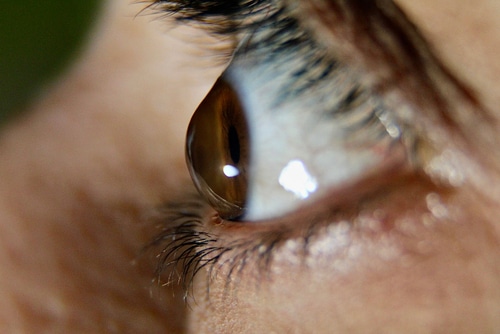
Your cornea is as unique as your thumbprint. Not only is the curvature of your cornea one of a kind, but the thickness and strength of it as well.
You can correct misshapen corneas with a procedure like LASIK or PRK. But treating a weak cornea is more complicated.
Thankfully, a procedure called corneal cross-linking can strengthen the cornea. Keep reading to learn more about corneal cross-linking and how it makes your cornea stronger.
How Does Corneal Cross-Linking Work?
Corneal cross-linking combines UV light and special eye drops to strengthen the collagen in your cornea. The procedure is minimally invasive, although it does carry some risk.
During the procedure, your eye doctor applies the drops, which contain vitamin B2, also called Riboflavin, to your eyes. The specialized UV light is shone onto the eyes shortly after to activate compounds in the drops.
During the procedure, your surgeon closely controls the UV light to ensure it does not damage your eyes. The light activates the drops, which release nutrients in the corneal tissue. These nutrients make it possible for new collagen cross-links to begin to form.
The links form between the existing collagen and the cornea. They shorten the existing collagen fibrils in your eye to make your cornea stronger. The entire procedure takes about an hour.
After your corneal cross-linking procedure is over a bandage contact lens gets placed on your eye. This contact lens induces healing and moderates any discomfort you may feel.
Your eye doctor will also prescribe you antibiotics and anti-inflammatory drops. These medications are to help reduce your risk of infection as your eyes heal.
Why Do I Need Corneal Cross-Linking?
Corneal cross-linking is a treatment for keratoconus, which is weak and thin corneal tissue. Your cornea needs cross-links to connect the collagen in your eye with the cornea.
If there is not enough cross-linking in your cornea, the unsupported corneal tissue can begin to bulge. This lack of support results in a cornea with an exaggerated cone-like shape.
There are a variety of negative symptoms from this bulging cornea. It can seriously impair your vision. Common symptoms include distorted vision, light sensitivity, and corneal scarring.
Corneal cross-linking stops the bulge from continuing to grow larger. But, it does not fix keratoconus.
Keratoconus does not always progress to the point that it requires corneal cross-linking. In its early stages, you can handle the change in vision with glasses or contacts. Sometimes keratoconus stops on its own without any treatment.
Are There Other Treatments for Keratoconus?
However, if it progresses, it can get bad enough that you may need a corneal transplant. A corneal transplant is much more invasive than a corneal cross-linking. There is also a chance that your body will reject the new tissue.
Corneal cross-linking works best on corneas that do not have too extreme of a cone shape. Early intervention with cross-linking can stabilize your vision before the cornea becomes too disfigured.
Early treatment also makes wearing contacts easier which is one way to treat the impaired vision that keratoconus causes.
Schedule an appointment at Colorado Eye Consultants in Littleton, CO, to discuss your keratoconus. Corneal cross-linking could help stop the progression of your disease.

